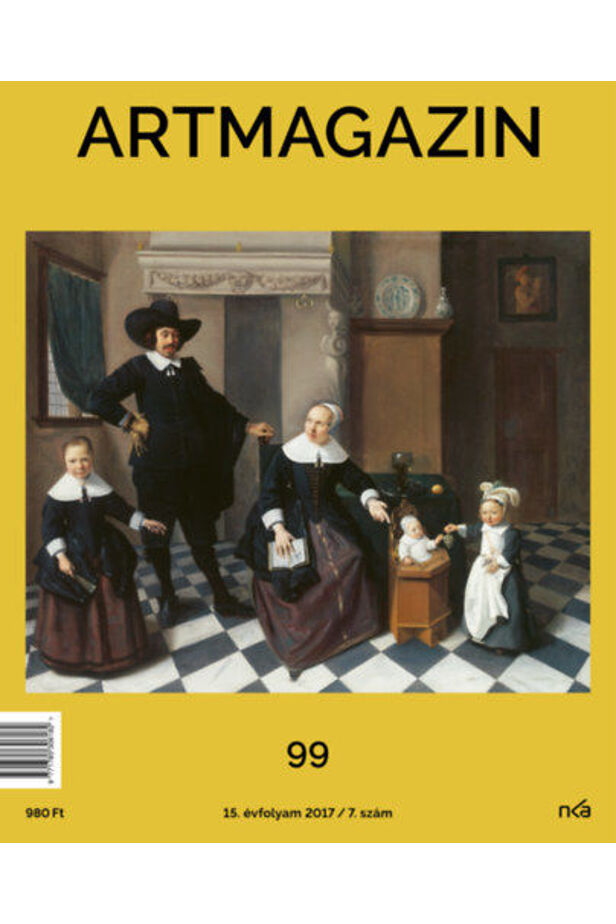Artmagazin 99. - 2017/7. song
Delivery time: 2 - 3 business days
Quantity:
HUF 890
Description
Artmagazin's articles are published in the field of contemporary and classical art, focusing on Hungarian and international events, research, trends and trends. Our interest also extends to border areas: fashion and design are as much a topic here as, say, the connection points between theater, architecture and music. Artmagazin No. 99 It is so interesting to see the past processing going. A few years ago, the events around 1945 connected or separated the pre-war and post-war period as a vast, opaque mass. Then the emergence of various silenced stories began, followed by a more detailed research of the period, a review and clarification of the unrealistic, stylized versions. Now that the second OFF-Biennale has also selected an emblematic story from here, in the immediate vicinity of 1945, it is clear how they are advancing day by day, not only the preparations for the biennial projects, but also the reconstruction work of the chosen preview. The history of the creation of Gaudiopolis (Joy City), the history and life of the inhabitants of the orphanage in Zugliget, named after Gábor Sztehlo, is more and more detailed and we get our knowledge from the film "There was something concrete behind the state Somewhere in Europe" the "but how did the children get fuel in the shattered, ruined Budapest that winter?" to the specifics. You can read about this in our interview with Gaudiopolis' first prime minister, László Keveházi, 91. With the firing question, we can immediately connect to another story, his picture frames. The Hungarian frame suffered quite well from the two wars, and many beautiful carvings and many less beautiful but wooden frames were made in the stove at that time. We are launching a series on the relationship between image and frame, the first part of which is an interview in which we ask András Zwickl, the art historian of the Hungarian National Gallery. Our series of old large art collectors has also been enriched in this issue: our cover image is also due to the typical monarchical collector, Ármin Stern, who was at home in Vienna as well as in Budapest, and who composed his ballet Zulejka between two bank board meetings. In addition to a lot of articles dealing with the past, we also write about contemporary exhibitions, of which William Kentridge's works deal with almost all different periods of history, but the exhibition of the Inda Gallery is a completely contemporary project, which was realized in collaboration with it can evoke roughly the same feelings from visitors as the memory of Gábor Sztehlo. CONTENTS 4 - 5 ARTANZIX 6 - 13 Interview Tünde Topor: IF WE LEARN TO LOVE EACH OTHER, WE LIVE, IF NOT, THERE IS NO LONGER ... Interview with Lutheran Pastor László Keveházi, the first Prime Minister of Gaudiopolis Kinin: Queer British Art 22 - 29 Frame Szikra Renáta: THE FRAME IS NEVER A MARGIN ISSUE Interview with András Zwickl, art historian of the Hungarian National Gallery 30 - 31 A picture Miklós Fáy: FLOWER IS THE MAN MS master: Vision 32 - 35 Exhibition Mucsi Emese: LIVE IN THE EGO Kentridge's faces 1,000,000 38 - 41 Exhibition Révész Emese: 365 CLEANSING A FOREIGN OBJECT 42 - 47 Memorials Róza Szilágyi Tekla: MUSEUM IN LAVA BUBBLE 48 - 49 Background Mátl Janka CITIZEN IN THE SERVICE OF CULTURE Ármin Stern 62 Gutenberg Galaxy József Kezman: GREEN, PURPLE AND BLACK. OUTLINE OF A PAINFULLY BEAUTIFUL ART Éva Gelencsér Rothman: József Nemes Lampérth
| publisher | Artmagazin Kft. |
|---|---|
| scope | 64 |
| volume unit | oldal |
| ISBN | 9771785306182 |
| year of publication | 2017 |
| binding | pur adhesive bonding |

Sign up for our newsletter and be the first to know!
A Zamnia hírlevélre való feliratkozással megerősítem, hogy betöltöttem a 16. életévemet.


